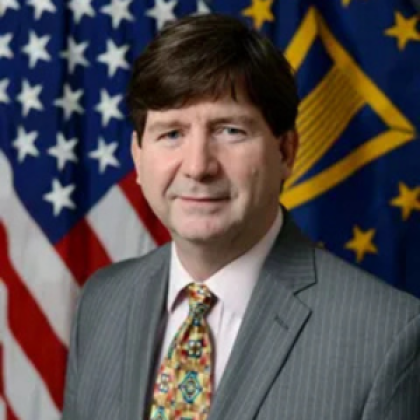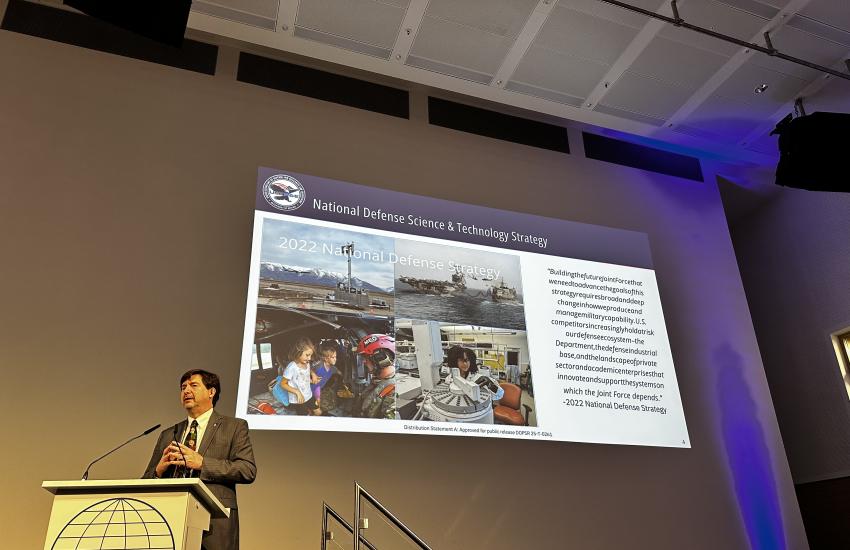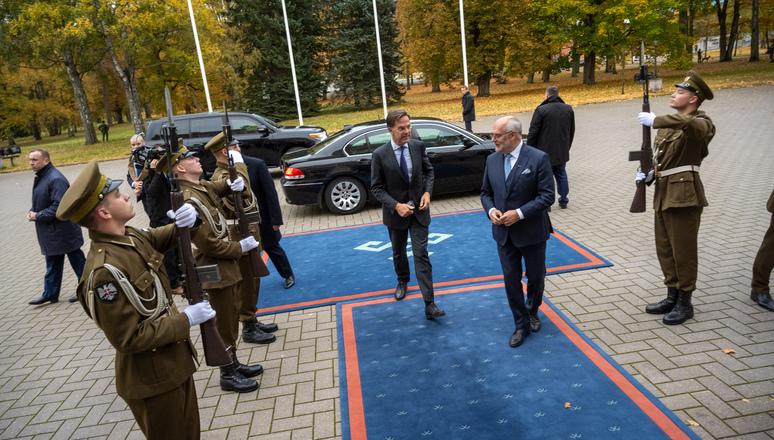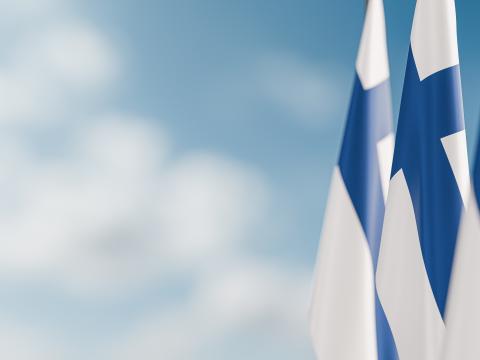Protecting NATO's Technology Acceleration
Given the race to adopt emerging and groundbreaking technologies that can be the difference in modern warfare, NATO’s DIANA program—the Defence Innovation Accelerator for the North Atlantic—must help protect the intellectual property of the companies involved in its accelerator and challenge programs.
Akin to the U.S. Department of Defense’s (DoD’s) Defense Innovation Unit (DIU), NATO’s DIANA program is essentially a matchmaker, explained Jeffrey Singleton, the U.S. representative to the DIANA Board of Directors at NATO.
Singleton, who is also the deputy assistant secretary of defense for science and technology futures in the Office of the Under Secretary of Defense for Research and Engineering at DoD, spoke December 4 at AFCEA’s TechNet Transatlantic conference in Frankfurt, Germany.
The NATO effort is bringing in companies, especially small- and medium-sized outfits who have commercial technologies that the military could leverage. Innovators, academia, startups and other types of companies making these potential dual-use technologies may not have necessarily worked with the military or government before, the U.S. representative to DIANA said.
NATO has set up three regional hubs for the DIANA efforts. One is in the United Kingdom at the White City Innovation Campus at London’s Imperial College, which serves as DIANA’s headquarters. The second regional hub, in Tallinn, Estonia, was set up in May, and the North American hub is in Halifax, Canada.
And it is through this distributed network—and associated technology accelerators in each country—that DIANA aims to keep reducing the barriers to entry for academia, small businesses and startups, Singleton reported. Through the partnerships, member nations will have the ability to adopt the emerging and disruptive technologies, which will help strengthen their operations, as well as NATO’s.
But in order to strengthen the alliance's technological edge through the partnerships with these nontraditional innovators, NATO, in turn, has to be a bit of a protector for itself and the companies, especially as adversaries have been known to make a priority of stealing intellectual property or hiding their investments.
“One of the underlying principles of DIANA is to actually start to educate these entrepreneurs and academics of some of the challenges that come with foreign investment, adversarial investment,” he explained. “We want to protect them as best we can from us losing technology to folks who are opposed to us."
For the U.S. companies participating in DIANA, Singleton has to closely examine their provenance.
“One of the processes I go through for all the U.S.-based companies is that I scrub them,” he said. “I go through a deep vetting, similar to our small business innovation research (SBIR) program, for the SBIR companies. I vet them to look for who the real investors are.”
And once NATO identifies the companies it has selected to work with in the DIANA program, it exposes another challenge—identifying them to adversaries, Singleton continued.
“So, it is critical that we not just vet these companies initially, but that we watch them as they go along in the process, because once we've identified them, now [they could be] targets [by adversaries] interested in their technology, who might also invest and buy [their solutions].”
Already, the DIANA program has seen great interest from the private sector to participate in the first two challenge program cohorts. The latest one—the results of which will be announced later this week—had 3,000 applicants, Singleton said. From that, they will only select 75 startups. This group will help advance technologies around five areas: energy and power; data and information security; sensing and surveillance; human health and performance; and critical information technologies.
The first cohort about a year ago had 1,300 startups competing for 44 slots.
“Ninety percent of these companies have less than 10 people,” noted Singleton. “They can't afford to hire a team of proposal writers or even travel to conferences ... but they do need to learn how to work with us, and so that's what this challenge program does.”
Its matchmaking will have—and already has had—cumulative effects, the U.S. representative to DIANA said. At a recent meeting in Seattle with American companies from the first cohort, three startups, each with a separate solution—one specializing in wave power generation, another in undersea mapping and the third working with communications networks—collaborated to create an integrated underwater capability after they met. This one example demonstrates the program's effectiveness in fostering innovation through networking, the U.S. representative to DIANA emphasized.

We really want to strengthen that ecosystem across the alliance. It is incredibly important.
In addition, the program’s accelerator locations are increasing in number. In the United States, the DIANA accelerators include: MassChallenge in Boston, Pacific Northwest and Mission Innovation X at the Massachusetts Institute of Technology.
And with Sweden and Finland, even though they just made history becoming new members of NATO, “they immediately jumped on board,” setting up DIANA accelerators in their own countries, Singleton shared. And the Estonian hub has already been matching entrepreneurs in its region to help Ukraine.
Next year, the alliance aims to set up test centers, including three based in the United States at existing DoD University Affiliated Research Centers.
“A lot of the technologies, they will get great experience and a great understanding of what the needs are from our test center network,” he offered. “You know, we haven't really tapped into the test center network just yet, but we expect to start using those next year.”
As it grows, the DIANA program will have to get past several challenges, including how the alliance will certify new technologies and integrate them into existing systems. The program must also address how to transition successful innovations into actual military capabilities across the alliance.
The United States, meanwhile, has an unanswered policy decision in regard to DIANA, as it is has not signed up to be one of the 24 participating nations in the 1 billion euro NATO Innovation Fund, or NIF. This creates some limitations, Singleton explained.
“The NIF cannot invest in U.S.-based companies,” he noted. “It is a little bit of a challenge, and it's a policy question sitting at very high levels: Congress, the White House and upper levels of DoD policymakers,” he clarified. The United States does have “a couple” of other programs that can help advance dual-use technologies, including the DoD’s own Office of Strategic Capital.
The DIANA effort, announced at NATO’s Madrid Summit in June 2023, represents a strategic shift in how the alliance is approaching emerging and disruptive technologies, Singleton concluded. And he expects more progress to be announced at the coming NATO Summit in The Hague in 2025.
“We really want to strengthen that ecosystem across the alliance,” Singleton said. “It is incredibly important.”
TechNet Transatlantic is organized by AFCEA International in conjunction with the AFCEA Europe office. SIGNAL Media is the official media of AFCEA International.






Comments